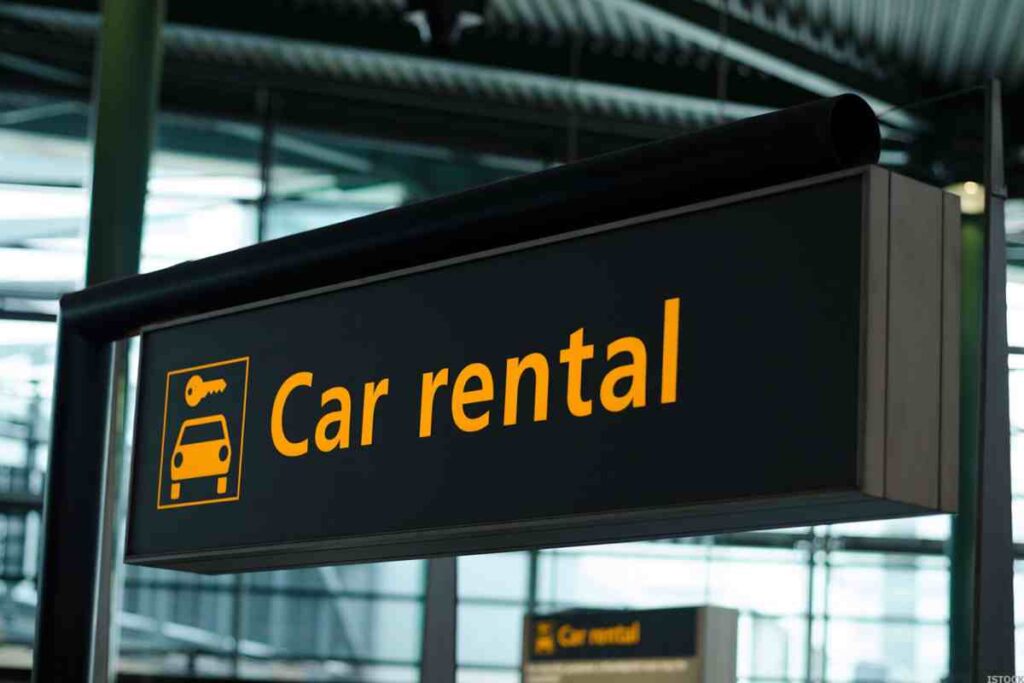In the era of digital transformation, ridesharing has emerged as a popular mode of transportation, offering convenience and flexibility to millions around the world. Companies like Uber and Lyft have revolutionized the way we commute, but this innovation comes with its own set of challenges – one of them being the cost of rideshare insurance. If you’ve ever wondered why rideshare insurance is often more expensive than traditional auto insurance, you’re not alone.
In this article, we’re going to break down the ins and outs of rideshare insurance. We’ll explain why it costs more, what risks come with ridesharing, and how insurance companies figure out these rates. Plus, we’ll highlight why having rideshare insurance is so important for drivers, helping them avoid financial troubles.
Understanding Rideshare Insurance

Rideshare insurance is a type of car insurance specifically designed for drivers who work with ridesharing companies like Uber and Lyft. It serves as a bridge between personal auto insurance and commercial auto insurance, providing coverage during the times when a driver is logged into the ridesharing app but has not yet accepted a ride request.
Here’s how it differs from personal and commercial auto insurance:
- Personal Auto Insurance: This is the standard insurance that covers individuals for personal use of their vehicle. It does not provide coverage when the vehicle is used for commercial purposes, such as driving for a rideshare service.
- Commercial Auto Insurance: This type of insurance is designed for vehicles used primarily for business purposes. It provides comprehensive coverage for the vehicle, driver, and passengers during all business operations. However, it’s more expensive than personal auto insurance and may not be necessary for rideshare drivers who also use their vehicles for personal activities.
- Rideshare Insurance: Rideshare insurance extends personal auto insurance to cover the driver during the period they are logged into the rideshare app but haven’t accepted a ride request yet. Once a ride is accepted, the rideshare company’s insurance typically takes over. Without rideshare insurance, there would be a gap in coverage during this period, as personal insurance would not apply, and the rideshare company’s insurance would not yet be in effect.
Why it’s necessary for Uber and Lyft drivers:
- Coverage Gaps: There are periods when a driver’s personal auto insurance may not cover incidents if the driver is logged into the rideshare app. Rideshare insurance covers these gaps, ensuring continuous protection.
- Policy Requirements: Major insurers often require drivers to have rideshare insurance if they use their personal vehicle for business purposes, like driving for Uber or Lyft. Without it, a driver risks having their personal auto policy canceled if the insurer discovers the vehicle is being used for ridesharing without proper disclosure.
- Financial Protection: Rideshare insurance provides financial protection against potential accidents and liabilities that occur when the driver is available for hire but has not yet accepted a ride request. This is crucial because the rideshare company’s policy may not offer full coverage during this time.
In summary, rideshare insurance is essential for drivers working with companies like Uber and Lyft to ensure they have adequate coverage throughout all phases of their ridesharing activities and to avoid potential financial risks associated with insurance gaps.
Insurance Coverage Gaps
Rideshare drivers navigate through various stages of their work cycle, each with its own insurance implications. Understanding these coverage gaps is crucial for drivers to ensure they are adequately protected at all times. Here’s an overview of the typical work cycle for a rideshare driver and where the potential coverage gaps exist:
- Off Duty (Personal Use): When the rideshare app is off, the driver is considered off duty, and their personal auto insurance policy provides coverage. There are no rideshare-related coverage gaps during this period.
- App On, Waiting for a Ride Request (Period 1): This is where the first significant coverage gap arises. When the driver turns on the rideshare app and is waiting for a ride request, they are technically available for work but not yet under the commercial policy of the rideshare company. During this time, the driver’s personal auto insurance does not apply, and the rideshare company’s insurance typically offers very limited coverage, if any.
- Ride Accepted, En Route to Pick Up Passenger (Period 2): Once a ride request is accepted, and the driver is en route to pick up the passenger, the rideshare company’s insurance begins to provide more substantial coverage. However, this coverage may still have limitations, and the driver’s personal policy is no longer in effect.
- Passenger Picked Up, During Trip (Period 3): The most comprehensive coverage from the rideshare company is in effect when the passenger is in the vehicle and during the trip. This is typically when the highest level of coverage is provided, including liability, collision, and comprehensive coverage.
- Between Trips: If a driver drops off a passenger and is waiting for another ride request without logging off, they may revert to the limited coverage similar to Period 1 until they accept a new ride.
To address these gaps, rideshare drivers often opt for rideshare insurance, which is designed to cover the driver during Period 1 and potentially between trips. It’s a hybrid policy that supplements the driver’s personal insurance and the coverage provided by the rideshare company, ensuring continuous protection throughout the work cycle.
Risk Factors
There are several reasons why insurance companies consider rideshare driving to be a high-risk activity:
- Part-Time and Untrained: Many rideshare drivers are part-time workers who are not professionally trained drivers. They often drive after their regular work hours to earn extra income, which can lead to fatigued driving—a significant risk factor for accidents.
- Increased Mileage: Rideshare drivers typically drive significantly more miles than the average driver, increasing the likelihood of being involved in an accident.
- Diverse Driving Locations: Rideshare drivers often drive in various locations, including busy city centers, airports, and unfamiliar neighborhoods, which can increase the risk of accidents.
- More Time on the Road: The more time spent on the road, the higher the chances of an accident. Rideshare drivers often work during peak hours, including rush hour and weekends, when accident rates are higher.
- Frequent Stops and Starts: Picking up and dropping off passengers often involves frequent stopping, starting, and pulling over to the side of the road, which can increase the risk of minor accidents and collisions.
- Driver Distraction: Rideshare drivers need to use their app while driving to accept rides, navigate to the passenger’s location, and confirm drop-offs. This could potentially lead to distracted driving.
- Passenger Liability: Rideshare drivers are responsible for the safety of their passengers. If a passenger is injured during a ride, the driver could be held liable.
- Vehicle Wear and Tear: The increased mileage and frequent use can lead to faster vehicle depreciation and more maintenance issues, which can be costly.
These factors contribute to the perception of rideshare driving as a high-risk activity, leading to higher insurance premiums.
Cost Influencers
The cost of rideshare insurance is influenced by several factors:
- Driving Record: Drivers with a history of accidents or traffic violations are likely to pay more for rideshare insurance.
- Location: The area where you drive can impact your insurance rates. High-traffic urban areas typically have higher insurance costs than rural areas.
- Vehicle Type: The make, model, and year of your car can affect your insurance rates. More expensive cars typically cost more to insure.
- Hours on the Road: The more hours you spend driving for a rideshare company, the higher your insurance costs may be.
- Coverage Limits: Higher coverage limits result in higher insurance premiums. If you choose lower deductibles, your premium will also be higher.
- Age and Experience: Younger and less experienced drivers often pay more for insurance, including rideshare insurance.
- Claims History: If you’ve made insurance claims in the past, especially while driving for a rideshare company, your rates may be higher.
- Credit Score: Many insurance companies use credit scores as a factor in determining insurance rates. A lower credit score can lead to higher premiums.
- Driving Frequency: If you’re a full-time rideshare driver, you’re likely to pay more for insurance than someone who drives part-time.
- Driver Training: Some insurance companies offer discounts to drivers who have completed approved defensive driving or driver safety courses.
Remember, each insurance company uses its own formula to calculate rates, so it’s always a good idea to shop around and compare quotes from different providers.
Insurance Policy Options
Rideshare drivers have several insurance policy options available to them:
- Rideshare Endorsement: This is an add-on to a personal auto insurance policy that covers the driver during Period 1 (app on, no passenger match). Some insurance companies offer this as an affordable way to cover the gap between personal auto insurance and the rideshare company’s insurance.
- Commercial Auto Insurance: This type of policy is designed for vehicles used for business purposes. It provides coverage at all times, whether the app is on or off. However, it’s typically more expensive than other options.
- Hybrid Policies: Some insurance companies offer policies specifically designed for rideshare drivers. These hybrid policies provide coverage for personal use, rideshare use, and delivery use. They cover the driver during all periods of the rideshare process.
- Pay-Per-Mile Insurance: This is a type of car insurance where the premium is determined by how many miles you drive. It can be a good option for part-time rideshare drivers.
- Gap Coverage: This is an additional coverage that rideshare drivers can purchase to cover the deductible gap between their personal auto policy and the coverage provided by the rideshare company.
- Personal Auto Policy with Business Use: Some insurance companies offer personal auto policies that also cover business use, including ridesharing. This can be a good option if you also use your vehicle for other business purposes.
- Non-Owner Car Insurance: If you’re renting or borrowing a car for rideshare driving, non-owner car insurance can provide liability coverage.
Remember, the best policy depends on several factors including how often you drive for rideshare, your personal driving history, and your budget.
Legal and Regulatory Aspects
Let’s explore the legal requirements and how regulations impact rideshare insurance costs and availability in different regions:
1. United States (Florida):
- Minimum Coverage: Rideshare drivers in Florida need their own auto insurance policies. At a minimum, they must have $10,000 of personal injury protection (PIP) coverage and $10,000 of property damage liability coverage to meet Florida’s auto insurance requirements.
- Local Variations: Regulations can vary significantly by state. Each state may have specific requirements for rideshare insurance, so it’s essential for drivers to understand the rules in their region.
2. Canada and the United States (General):
- Licensing Requirements: Every jurisdiction in Canada and the United States has some form of licensing requirement for rideshare services. Drivers must comply with local regulations to operate legally.
- Insurance Considerations: Personal auto insurance typically does not cover vehicles for hire. Rideshare insurance bridges this gap, providing coverage for vehicle damage, liability for passengers, and uninsured motorists coverage.
3. Safety Regulations:
- Focus on Rider Safety: Safety regulations for rideshare companies are generally directed at ensuring the safety of passengers. These regulations cover aspects such as background checks for drivers, vehicle safety standards, and data privacy.
4. Fleet and Vehicle Requirements:
- Vehicle Standards: Rideshare companies must adhere to specific vehicle requirements, including safety inspections, cleanliness, and maintenance.
- Driver Eligibility: Regulations often define eligibility criteria for drivers, such as age, driving record, and criminal background checks.
5. Evolving Legal Aspects:
- Autonomous Vehicles: As the ridesharing industry evolves, legal challenges related to autonomous vehicles (self-driving cars) are emerging. Regulations must adapt to address these technological advancements.
In summary, rideshare insurance is influenced by local laws and regulations, which dictate the minimum coverage requirements and eligibility criteria.
The Role of Rideshare Companies
Rideshare companies like Uber and Lyft play a significant role in the insurance landscape for their drivers. Here’s how they contribute to the insurance coverage:
- Providing Primary Insurance: Once a driver accepts a ride request and until the passenger is dropped off, rideshare companies provide primary insurance coverage. This includes liability, uninsured/underinsured motorist coverage, and contingent comprehensive and collision coverage.
- Coverage During App Usage: When the app is on and the driver is waiting for a ride request, the company provides limited liability coverage. This is often not enough to cover all expenses in the event of an accident, which is why additional rideshare insurance is important.
- Insurance Gaps: Rideshare companies do not provide coverage when the app is off, and their coverage is limited when the driver is available but has not yet accepted a ride. These are the periods when rideshare insurance is crucial for drivers.
- High Deductibles: The insurance provided by rideshare companies often comes with high deductibles, which means drivers may still have significant out-of-pocket expenses after an accident.
- Regulatory Compliance: Rideshare companies must comply with state and local regulations regarding insurance coverage for their drivers. They often adjust their policies to meet these legal requirements.
- Educating Drivers: Rideshare companies educate their drivers about the importance of insurance and the need for additional coverage beyond what is provided through the platform.
- Partnerships with Insurers: Some rideshare companies partner with insurance providers to offer their drivers discounts or special rates on rideshare insurance policies.
Why Does Mileage Matter On Car Insurance?
In summary, while rideshare companies provide a certain level of insurance coverage for their drivers, some gaps need to be filled by additional rideshare insurance. Drivers must understand the extent of the coverage provided by these companies and ensure they have adequate protection to cover all phases of their rideshare activities.
Ways to Lower Rideshare Insurance Costs
There are several strategies that rideshare drivers can employ to potentially lower their insurance costs:

- Shop Around: Insurance rates can vary significantly from one provider to another. It’s always a good idea to get quotes from multiple insurance companies to ensure you’re getting the best deal.
- Maintain a Clean Driving Record: Drivers with no accidents or traffic violations on their record are often eligible for lower insurance rates.
- Choose a Higher Deductible: Opting for a higher deductible can lower your insurance premium. However, it’s important to remember that this means you’ll have to pay more out-of-pocket if you need to make a claim.
- Take a Defensive Driving Course: Some insurance companies offer discounts to drivers who complete approved defensive driving courses.
- Install Safety Features in Your Vehicle: Vehicles equipped with safety features like anti-lock brakes, airbags, and anti-theft devices may qualify for discounts on insurance premiums.
- Bundle Your Insurance Policies: If you have multiple insurance policies (like home, auto, and life), you might be able to get a discount by bundling them with the same company.
- Ask About Discounts: Insurance companies often offer various discounts that you might be eligible for, such as low-mileage discounts, good student discounts, and more.
FAQs
Q 1. What happens if I’m in an accident during a period when the rideshare app is on but I haven’t accepted a ride request?
Ans. During this period, known as Period 1, rideshare companies like Uber and Lyft typically provide limited liability coverage. This may not cover the driver’s own injuries or vehicle damage. It’s advisable to have rideshare insurance that covers this gap.
Q 2. Is rideshare insurance mandatory for all Uber and Lyft drivers, or does it depend on the state?
Ans. The requirement for rideshare insurance varies by state. While Uber and Lyft provide some coverage, personal auto policies often exclude ridesharing. Many states require additional rideshare insurance to ensure full coverage during all phases of ridesharing.
Q 3. How does rideshare insurance work if I’m driving for multiple rideshare companies?
Ans. A single rideshare insurance policy generally covers you regardless of which rideshare platform you’re using. It’s designed to fill the coverage gaps during the times you’re logged into any ridesharing app but haven’t accepted a ride request.
Q 4. Can I use my personal auto insurance policy for ridesharing if I add a rideshare endorsement?
Ans. Yes, adding a rideshare endorsement to your personal auto insurance policy can extend your coverage to include the times when you’re logged into a ridesharing app and waiting for a ride request. This helps cover gaps that neither your personal policy nor the rideshare company’s insurance might cover.
Q 5. Does rideshare insurance cover me when I’m using the car for personal use?
Ans. Rideshare insurance typically does not cover personal use. Your personal auto insurance policy provides coverage when you’re not logged into the rideshare app. Ensure your personal policy is active and informed about your ridesharing activities.
Q 6. Can I share a rideshare insurance policy with another driver, such as a spouse or a friend?
Ans. Generally, rideshare insurance policies are tied to individual drivers and their personal auto insurance policies. Sharing a policy is not typically possible, and each driver needs their own rideshare insurance to be properly covered.
Conclusion
In conclusion, the cost of rideshare insurance is influenced by a multitude of factors, including the inherent risks associated with ridesharing, the coverage gaps that exist in traditional insurance policies, and the specific requirements set by local laws and rideshare companies. While the premiums may seem high, it’s important to remember that rideshare insurance provides essential protection for drivers, filling in coverage gaps and ensuring they’re adequately covered while they’re on the job. It’s an investment in their business and their peace of mind.

Join Shubham, a finance enthusiast with a mission to empower readers with the knowledge and tools to achieve financial freedom. Discover smart financial advice and unlock your financial potential.


